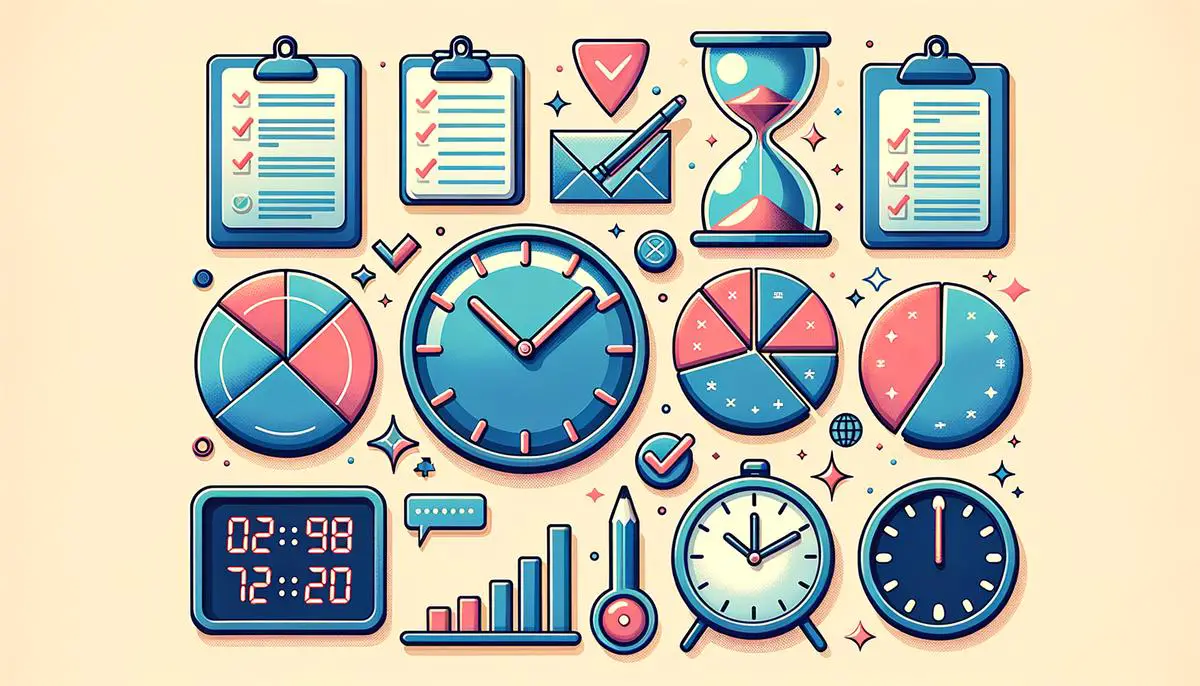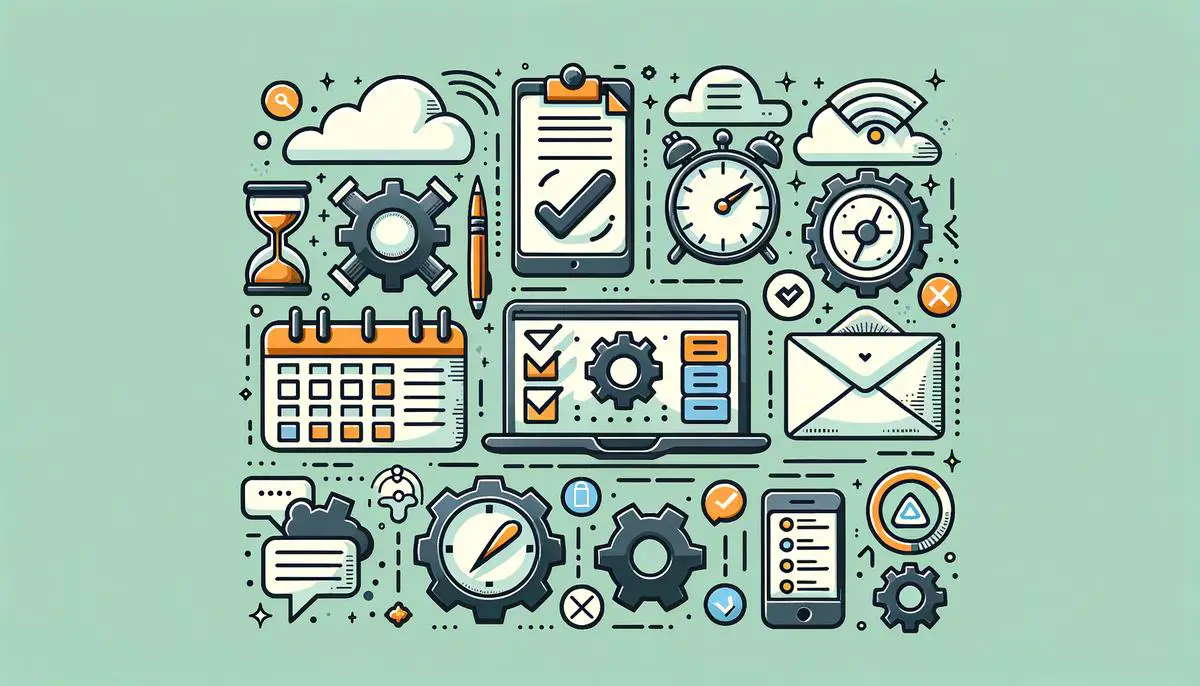Mastering the art of time management and task prioritization is a journey that requires a thoughtful approach to our daily routines. By focusing on the strategies that allow for a balanced and productive workflow, we can navigate our responsibilities with greater clarity and less stress. This discussion aims to shed light on practical methods to enhance efficiency, from the nuanced art of saying ‘no’ to the strategic use of technology, all while maintaining our well-being at the forefront.
Prioritizing Tasks
Identifying urgent versus important tasks is a critical step in managing your workload more efficiently. Often, everything feels important, leading you to tackle tasks based on who shouted the loudest. By breaking down tasks into categories, such as urgent, important, both, or neither, using tools like the Eisenhower Box, you gain clarity on what truly requires your immediate attention and what can wait.
Prioritizing tasks effectively allows you to focus on what will drive the most significant results first. This approach not only ensures that crucial deadlines are met but also significantly reduces the amount of stress you face daily. The satisfaction of ticking off high-priority tasks from your list provides a psychological boost, reinforcing your sense of achievement and motivation.
Applying the Eisenhower Box is simpler than it might sound. Imagine drawing a large square on a sheet of paper and dividing it into four smaller squares. Label each quadrant: urgent and important; important but not urgent; urgent but not important; and neither urgent nor important. This visual aid helps you objectively assess where each task lies.
Focusing on ‘urgent and important’ tasks first helps prevent critical deadlines from being missed. These are the tasks that can have significant implications if not completed promptly. Meanwhile, ‘important but not urgent’ tasks are the ones that contribute to long-term goals and success. These should be scheduled in your calendar before they become urgent.
Tasks classified as ‘urgent but not important’ can often be delegated. This practice frees up your time for more strategic work, critical for your growth and stress reduction. Conversely, tasks that are neither urgent nor important should be examined closely. If they provide little to no value, consider dropping them altogether.
Implementing this categorization method cuts through the noise of a bustling work environment. It brings a new level of focus and efficiency to your workday. The art of distinguishing between urgency and importance can significantly lighten your workload, making your daily job less stressful and more manageable.
By prioritizing tasks, you limit the risk of burnout. Constantly reacting to every task as if it’s a crisis can quickly lead to exhaustion. Prioritization ensures you’re expending energy on tasks that advance your key goals while maintaining your mental well-being.
Remember, prioritizing tasks isn’t about finding more time to work; it’s about working smarter. Recognizing that not everything has to be done right now—or by you—transforms your work approach. It makes your to-do list look less like a mountain and more like a series of manageable hills.

Setting Realistic Deadlines
Setting realistic deadlines is crucial for stress reduction as it allows individuals to plan their activities within a feasible timeframe, significantly reducing the need to hurry at the last moment. By understanding the time needed for each task more accurately, the quality of work improves. Accurate time estimation requires one to break down tasks into smaller steps and predict the time each step will take, which can be refined through experience and retrospect evaluations of past similar tasks.
Acknowledging the psychological benefits of control over one’s schedule, realistic deadlines offer a sense of empowerment. Having the autonomy to set and adjust deadlines according to one’s pace and work capacity fosters a better work-life balance. This autonomy leads to a reduction in anxiety, as individuals no longer feel overwhelmed by unrealistic expectations.
Moreover, setting achievable deadlines mitigates the risk of last-minute revisions that may compromise the quality of work. When deadlines are realistic, there is adequate time for review and fine-tuning, ensuring that the final output meets or exceeds expectations. This approach not only enhances job satisfaction but also bolsters one’s reputation for delivering comprehensive, high-quality work.
Another key benefit is fostering teamwork and collaboration. When realistic timelines are shared with teammates, it sets a cooperative environment where members can effectively plan their contributions. Transparent communication about deadlines helps in aligning the team’s efforts, preventing bottlenecks and ensuring smooth progress towards project completion.
Realistic deadlines also contribute to personal and professional development. With sufficient time allocated for each task, individuals can incorporate time for learning and growth. This might include researching innovative strategies, experimenting with new technologies, or even reflection on completed work to identify areas of improvement. Such practices not only enhance the current project but also equip individuals with new skills for future endeavors.
In essence, the practice of setting achievable deadlines is a cornerstone of efficient task management. It transforms how tasks are approached, leading to a structured work process that minimizes stress and maximizes productivity and satisfaction. By understanding the importance of this balancing act, professionals can enjoy a healthier, more manageable work dynamic that promotes both personal well-being and professional excellence.

The Power of ‘No’
Learning to say ‘no’ at work isn’t just a matter of verbal expression; it’s a strategic skill that plays a pivotal role in managing work stress and enhancing overall job satisfaction. At its core, saying ‘no’ is a form of self-defense against the relentless tide of demands and expectations that one might face in a professional setting. This skill reflects an individual’s ability to assert boundaries effectively, ensuring they’re not swamped by responsibilities that exceed their capacity or deviate from their core objectives.
Assertive communication bridges the gap between passive acquiescence and aggressive refusal. It’s about expressing one’s limitations and priorities clearly and respectfully, without causing offense or shutting down future opportunities. This approach is beneficial for both the employee and employer, as it encourages open lines of communication, fostering a more understanding and supportive work environment. When employees feel comfortable stating their limits, it cultivates a culture of respect for personal boundaries and mutual support among coworkers.
The practice of saying ‘no’ plays a crucial role in preventing overcommitment—a common pitfall that many face in the workplace. Overcommitment not only strains an individual’s time and resources but can also lead to diminishing returns in terms of quality of work. By judiciously assessing requests and weighing them against existing commitments and priorities, employees can maintain a sustainable workload, thereby enhancing their efficiency and output quality.
Moreover, mastering the art of saying ‘no’ empowers individuals to focus on tasks that align with their skills, interests, and career goals. It enables professionals to invest their energies where they can add the most value and gain the most satisfaction, instead of being derailed by every incoming task or project that falls outside their purview. This selective engagement leads to more meaningful contributions, increased job satisfaction, and a heightened sense of accomplishment.
The impact of setting boundaries by refusing additional responsibilities when necessary extends beyond the immediate relief from work stress. It contributes to long-term personal growth by fostering a discerning approach to task and project selection. This proactive stance facilitates more strategic career development, as individuals can hone their skills in areas that matter most to them and avoid being pigeonholed into roles or tasks that don’t contribute to their professional objectives.
On a relational level, saying ‘no’ when appropriate also models healthy work-life balance practices for colleagues. It sends a message that while work is important, self-care and maintaining personal boundaries are equally crucial. This can help shift workplace norms towards more sustainable practices, encouraging everyone to take stock of their limits and communicate them openly.
In terms of team dynamics, understanding how and when to assertively decline additional tasks leads to better resource allocation within teams. It gives team leaders clearer insights into who has the bandwidth for new projects, ensuring that tasks are assigned to those who can genuinely take them on without risking burnout. This strategic task distribution plays a significant role in maximizing team performance and maintaining high morale.
Ultimately, the skill of saying ‘no’ is a vital component of stress management and professional development. It requires practice and perseverance but mastering it leads to greater control over one’s work-life balance, enhances job satisfaction, and promotes a healthier, more productive workplace atmosphere. By establishing clear boundaries, individuals safeguard their time, mental health, and professional growth trajectories, laying the groundwork for a fulfilling career.

Breaks and Downtime
Harnessing the power of regular breaks and scheduled downtime is essential in preventing burnout while maintaining high productivity levels. This approach nurtures a harmonious balance between work and rest, key for sustaining long-term professional effectiveness. One method gaining popularity for its simplicity and efficacy is the Pomodoro Technique, which breaks work into intervals, traditionally 25 minutes in length, followed by a short break. This method capitalizes on the brain’s capacity for focused attention and the need for rest to prevent cognitive fatigue.
In a similar vein, the concept of ‘work sprints’ takes center stage in optimizing focus and enhancing productivity. This strategy involves dedicating blocks of time to intense work followed by brief periods of rest, mirroring the structure of the Pomodoro Technique but on a customizable scale. Such sprints allow for deep work sessions where one can fully immerse into tasks without distractions, fostering both creativity and efficiency. However, what sets ‘work sprints’ apart is their adaptability to the task’s nature and the individual’s workflow, making them a versatile tool in any professional’s arsenal.
The effectiveness of these methods lies in their structured approach to work and rest. By designating time for focused work and equally important downtime, individuals can maintain a higher level of productivity and creativity without succumbing to burnout. Furthermore, recognizing the importance of rest within the workday reflects a broader understanding of how cognitive processes are influenced by fatigue. Regular breaks refresh the mind, leading to improved problem-solving abilities and innovation.
Additionally, scheduling downtime serves as a preemptive measure against stress accumulation, a common pitfall in today’s fast-paced work environment. By ensuring periods of rest are integral to one’s schedule, individuals can approach tasks with a rejuvenated mindset and a clearer perspective, which are critical for tackling complex problems and making informed decisions.
The strategic incorporation of breaks and downtime not only enhances individual well-being but also contributes to a more vibrant, dynamic workplace culture. It signals an acknowledgment of human limits and a commitment to sustainable work practices. As more individuals and organizations embrace these techniques, the shift towards more balanced, productive, and creatively fulfilling work environments becomes increasingly pronounced.
In essence, the role of regular breaks and scheduled downtime in effective time management cannot be overstated. Through techniques like the Pomodoro Technique and ‘work sprints,’ professionals can harness their peak productivity periods while ensuring ample rest, thus preventing burnout and promoting a healthier, more balanced approach to work and life.

Leveraging Technology
Harnessing the power of calendar apps can transform your daily schedule from a source of stress into a well-oiled machine. These apps do more than merely track your meetings and appointments; they can suggest optimal scheduling of tasks based on your productivity patterns. Imagine your calendar advising you to schedule deep-focus tasks during your peak energy hours or reminding you to allocate time for strategic planning each week.
Task management tools take the guesswork out of what you should be focusing on next. Picture a digital assistant that keeps your projects, tasks, and subtasks neatly organized, allowing you to see at a glance what needs your attention. These apps often come with features that allow you to assign priorities, set deadlines, and even share tasks with team members, making collaborative projects seamless.
Time tracking apps are essential, especially for those who bill by the hour or need to allocate their hours across multiple projects accurately. These tools not only help you keep a meticulous watch on how much time you’re spending on various activities but also unearth insights into potential time drains. By analyzing patterns in your time tracking data, you can pinpoint areas where efficiency could be improved, such as reducing the length of meetings or identifying tasks that could be automated or delegated.
Automation tools are a godsend for streamlining repetitive tasks. From automating email responses to scheduling social media posts, these technologies can save you a myriad of hours each week. The beauty of automation lies in its ability to reduce manual input, thereby minimizing the chances of human error and ensuring tasks don’t slip through the cracks.
Email management software can drastically cut down the time you spend in your inbox. Tools that organize emails into categories, flag high-priority messages, and even suggest quick replies, can turn email management from a dread-filled chore into a quick, painless process. Furthermore, features like scheduled sending and email reminders can improve your communication efficacy, ensuring you’re staying on top of your email game without it consuming your day.
Cloud storage and collaboration platforms brilliantly illustrate how technology can facilitate seamless teamwork, regardless of physical locations. These platforms allow teams to access, edit, and share documents anytime, from anywhere, ensuring that everyone is always in the loop. This real-time collaboration significantly reduces the delays typically associated with back-and-forth emails and file sharing, streamlining project completion and fostering a flexible work environment.
In summary, technology arms us with an arsenal of tools designed to tackle the persistent challenge of managing our time effectively to reduce work stress. By intelligently integrating these technological solutions into our daily routines, we can not only enhance our productivity but also reclaim time for personal well-being and professional growth.

In conclusion, the essence of managing our workload effectively lies in recognizing the value of our time and mental health. By adopting strategies that prioritize tasks, set realistic deadlines, and incorporate breaks, we not only improve our productivity but also foster a healthier work-life balance. The most crucial takeaway is the importance of being mindful about how we allocate our time, ensuring that we are not just busy, but productive in ways that matter most to us.
Writio: AI content writer for websites. This article was created by Writio!

